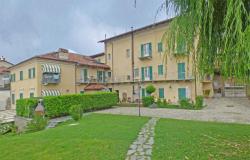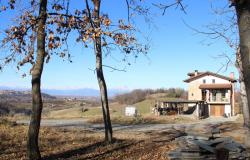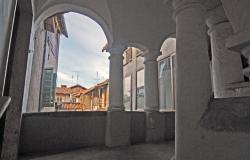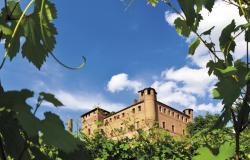 Over a thousand figures in medieval costume, 21 horses, a city decorated in banners and propitiatory evening meals - these are the ingredients that make the Asti Palio the city's most eagerly awaited event of the autumn season, a centuries-old mix of tradition and passion.
Over a thousand figures in medieval costume, 21 horses, a city decorated in banners and propitiatory evening meals - these are the ingredients that make the Asti Palio the city's most eagerly awaited event of the autumn season, a centuries-old mix of tradition and passion.
Taking place on September 16, this year the event boasts a number of important collateral initiatives, such as the Palio degli Sbandieratori.
On the Thursday before the Palio, the flag-bearers event fills Piazza San Secondo with sound and colour, with a parade devoted to the ancient tradition of flag-bearing set up by local neighbourhood groups.
On Friday, the same square will host the Palio market, where each committee sells curiosities and original objects, carefully packaged with the colours of each neighbourhood participating in the Palio.
The excitement and atmosphere of the race is already in full swing during the Saturday evening of propitiatory meals in the city streets and squares the night before the Palio, with singing, dancing, food and shows.
The Sunday programme kicks off with a blessing ceremony for each jockey and horse in local parishes at 10am. The morning continues with more displays by flag bearers, registration for the event and then, in the early afternoon, a procession in historic costume, with medieval scenes starring the winner of the previous year's race, the Captain of the Palio.
The procession continues to Piazza Alfieri. At 4pm the first race is held, with jockeys riding their mounts without saddles, in three batteries of seven horses each. At 5pm, there is a parade by the flag bearers, while the race final takes place at 6pm and the Palio is awarded - a velvet drape with the city's insignia and a statue of its patron saint, San Secondo.
The earliest confirmed records of the Palio date back to 1275, when, according to Guglielmo Ventura - a spice-seller by profession and a chronicler of events for enjoyment - the people of Asti raced under the walls of their enemy city, Alba, to deride them and destroy their vineyards.
Ventura reports that there were 21 competitors, and in the run-up to the event, contenders vigorously sought to ensure victory, with enormous meals, sacramental rites and playing pranks on their opposing neighbourhood competitors - until the final, intense confrontation on the field, preceded by a sumptuous parade.
The Thursday before the Palio is a key moment in assessing the real skill of participants ahead of the event.
Under the watchful eye of experts in the art of flag bearing and with the supervision of the Captain of the Palio, young flag bearers carry out exercises and spectacular figures, to win the "paliotto", the drape reproducing the city insignia.
The Palio of the flag bearers each year awards the best neighbourhood group of flag bearers. The evening event is followed by massive numbers of supporting youths, who turn out bearing banners and drums to encourage their own group.
The verdict is announced around about midnight. For an entire year, the winning neighbourhood will be lauded by the press, and will win the right to participate in national events of greater prestige. The winner of the 2006 edition was the Rione Santa Caterina group.
For more information see the Palio website at www.palio.asti.it.













